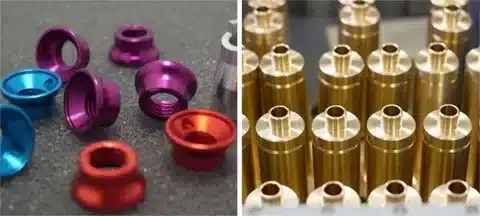Learn maximum core and cavity positioning injection molding for improved part quality, manufacturability and cost effectiveness. Get indispensable design tricks and logistics provisions with GWT Worldwide.
Introduction
Injection molding is a common procedure in manufacturing of plastic components. The mold itself contributes the most to the process, and the mold in question is the mold core and mold cavity that would form the molten material into the end technology. The right design and location of the core and the cavity is very important to attain the required part quality, reduce minimization of defects, and continue with production efficiency.
Here in this blog, we will tell you what the core and the cavity is, and how to strategically position them and even some important design considerations that can make a drastic difference in your molded parts. We will also present another role played by the logistics providers such as GWT Worldwide, which are crucial to smooth international trade of molded products.
What Are Core and Cavity in Injection Molding?
There are two major halves of a mold, which are core and cavity:
- Cavity(A-side): Composes the outer surface of the molded component.
- B-side (Core): This makes up the internal surfaces or features of part.
As the mold closes molten plastic is forced into the void formed between the core and the cavity and it fills the space to assume the shape desired.
Importance of Core and Cavity Placement
The way the core and cavity are positioned is more than shaping part. It influences:
- The appearance and looks of parts
- Facility of part ejection
- Surface finish quality
- Dimensional accuracy
- Warp and sink mark possibility
Misplaced parts may cause expensive rework, delay in production or products of low quality.
Key Factors to Consider in Core and Cavity Design
1. Part Geometry and Orientation
The orientation of cavity parts should be arranged in a way which has more cosmetic or appearance-sensitive surface created by the A-side (cavity). The inside (B-side) deals more with less visible, working practicalities, such as ribs, bosses and undercuts.
2. Draft Angle Requirements
By including enough drafted angles (micro-taps on upright vertical walls) one can increase the ability to remove the piece (parts) out of the mold without having to fear scratches or possibly deforming the piece.
General guideline:
- Plain Surfaces: most – 1 1/2 to 3 degrees draft each side.
- More in textured or deep.
3. Parting Line Position
The parting line – the contact point of the core and the cavity, must be made to:
- Reduce skeuomorphic effect
- Ease couching and molding design
- Adequate venting and mold filling is necessary
4. Avoiding Undercuts and Complex Features
Wherever practicable do not have under cuts or design features necessitating compound side-actions or lifters. As a result of simplification in part geometries, the process of tooling is quicker and cheaper.
5. Material Shrinkage
Various plastics contract at variable speeds as they become cool. This happen and the mold designers are to expect this by adapting cavity and core dimensions to ensure the final part accuracy.
Common Mistakes in Core and Cavity Placement
- Focusing more on convenience of the mold manufacturing as opposed to optics.
- Positioning parting lines at very visible areas.
- Ignoring draft angles which result in ejection issues.
- Ne enough attention to the behavior of material flow that leads to weld lines or sink marks.
How Logistics and Supply Chain Impact Molded Part Delivery
The production of parts in a molded shape means that the logistics must be properly organized in order to deliver it at the right time, particularly in the international markets. This is the area where the Shenzhen Guanwutong International Freight Forwarding Co.,Ltd. (GWT Worldwide) is excellent.
GWT Worldwide has been a reliable logistics service provider that provides:
- Air freight/ Sea freight
- China-Europe Rail-road Transport
- International Express & Courier services
- Customs bond & warehouse operations
- Amazon FBA shipping & Labeling service
Having a global network and using advanced logistics technology, GWT promises safe, fast and compliant process of molded products between manufacturers and end customers all over the world.
Conclusion
The positioning of the cores and cavities is a very important issue of injection molding that greatly defines the quality, cost and manufacturability of the finished part. Manufacturers may use part geometry, draft angle, behavior of the material and the positions of the parting line to make better parts without any typical defects.
In the case of companies that engage in international business in sale of products that are molded, an organization with efficient supply chain management is vital which is one of the services offered by GWT Worldwide.

